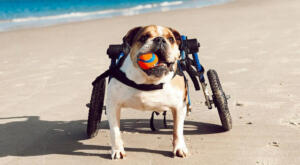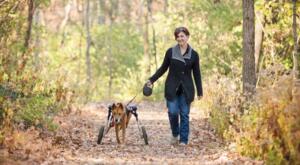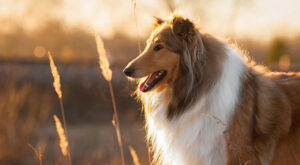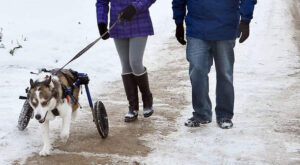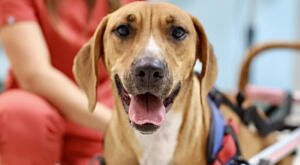You might need to carry, lift, or pick up your dog for countless reasons. Whether it’s to help your dog get into the car, lift them onto the veterinarian’s exam table, or even snuggle. Regardless of your dog’s size or age, most likely, you will need to pick them up at some point. The key is to do it as safely as possible.
How to Pick Up Your Dog
The right way to lift or pick up your dog depends greatly on your pet’s size. So, here’s the best way to carry your best friend based on their size:
Lifting a Small to Medium-Sized Dog
Slide your dominant arm under your dog’s chest between the front legs to support the torso. As you lift your dog, tuck its hind end between your arm and body. This way, you fully support them as you pick them up off the ground. Dogs with long bodies, like dachshunds, or dogs with a bad back need their entire spine supported anytime they’re picked up. Never pick your dog up with its arms, legs, or under the armpits.
Lifting a Medium to Large-sized Dog
Using both arms, place one arm behind your dog’s back legs and your other arm around the chest (in front of the dog’s front legs). As you lift, keep your dog’s body against your chest. The larger the dog, the bigger the risk you may strain yourself. To avoid back strain, keep your spine straight and always lift with your legs.
Carrying a Very Large Dog
The larger the dog, the harder it will be to lift them without hurting yourself. So instead, use a mobility aid to safely lift and support a giant dog. Special lifting harnesses can be used to support the hind legs, front legs, or both.
Doggy support harnesses feature handles and the proper support needed to help you stabilize your large dog or give them a little boost. It’s important to choose a harness that will support your dog in the right part of their body and provide them with balanced support throughout. For large dogs the best lifting harness should feature a front and a rear harness to allow pet parents to support the entire body. This allows parents to keep their dog level as they lift and help them to safely lift their pet up. Other mobility devices, such as a ramp, pet stairs, or even a dog wheelchair, can make keeping a large dog active easier.
Supporting an Injured Dog
When lifting an injured or immobile dog, you must be mindful that you are supporting them in the right place and lifting them without causing further harm. A pet stretcher is a safe way to lift and support your dog’s entire body when they are too injured to stand or walk on its own. As an injured dog heals, a wheelchair or harness can reduce the weight placed on the injured leg.
Dog Wheelchair Saves Owner’s Back
Before yesterday, I loved my dog. After putting him in the Walkin Wheels, I love him MORE! Why? Because I would do anything for Gilligan but, walking him with a harness (which worked but was killing my back) was OK, but, from the absolute instant that I put him in the wheelchair, both his life and my life improved. I know that the website and the disc and instructions each talk about what it will take to get the dog used to the device, and the instructions say to try out the device for a minute or two and get the dog over their fears.
Well, I just wish I had taken video of the first session! From the instant his feet hit the ground, he was off and trotting. Before the Walkin’ Wheels, I did not look forward to long walks (over 10 minutes). Now I can’t wait! Now our walks are pure joy. He is happier, I am happier, and I cannot thank you enough for your product.
It was simple to put together, easy to adjust, simple to attach to Gilligan, and works great. Thank you, thank you, thank you.
– Scott Broffman
Quick Tips to Safely Carry Your Pet
- Never lift by the legs or under the armpits
- Be mindful of how you support your dog
- For smaller dogs place your arm under the chest and body
- Larger dogs lift with your legs, not your back
- Do properly support your dog at all times
- Use mobility aids when beneficial
- Be extra careful with pets prone to back injuries, such as dachshunds or corgis
Most importantly, when lifting your dog, safety comes first! Before your bend over to pick your best friend up, carry them in a way that’s going to keep them supported and avoid straining your own back.
Related Articles:


